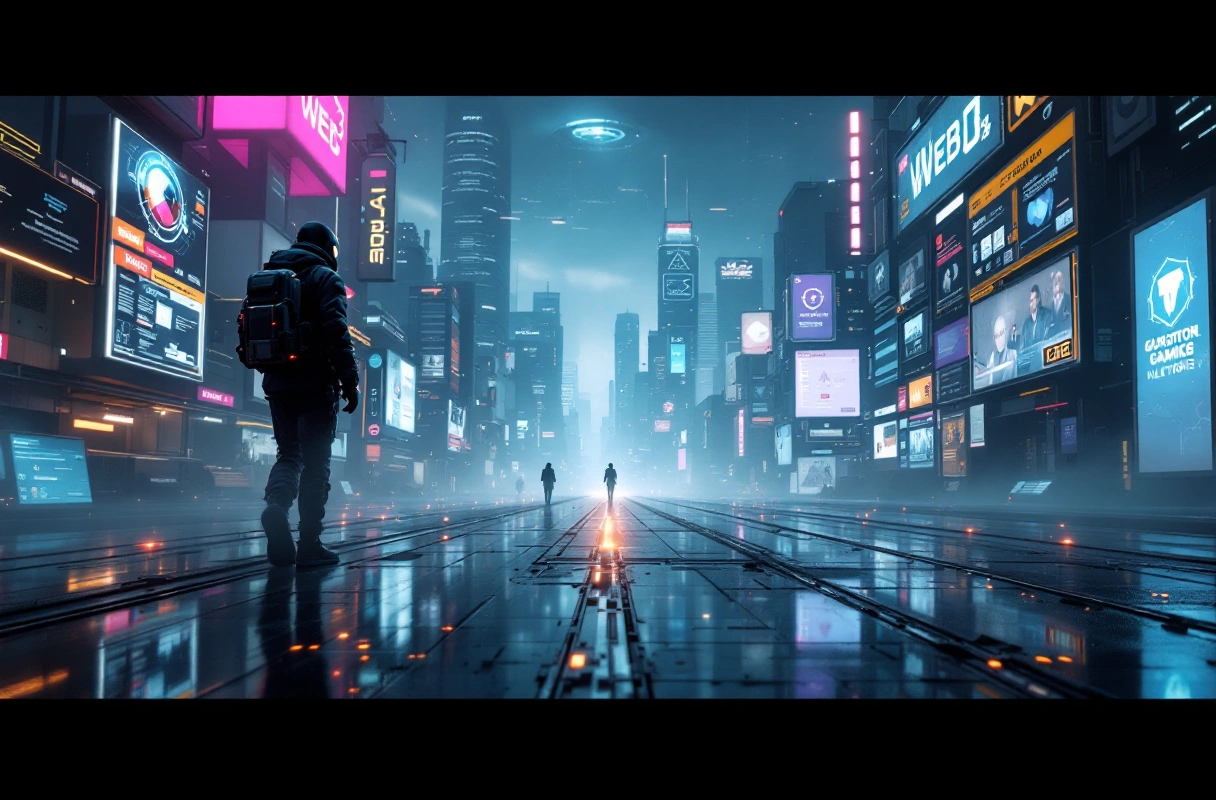The convergence of gaming and Web3 technologies is reshaping how players interact with digital worlds. This transformation is driven largely by advancements in web3 infrastructure, which enables decentralized applications (dApps), smart contracts, and blockchain technology to enhance user experiences and provide new economic opportunities. The gaming industry is on the cusp of a significant evolution, where traditional models are being challenged, and innovative solutions are emerging.
Web3 infrastructure introduces a new paradigm in gaming, allowing players to have true ownership of their digital assets. Through tokenization, gamers can buy, sell, and trade in-game items as unique digital assets, typically facilitated by non-fungible tokens (NFTs). This article will explore the implications of these changes and provide insights into the future landscape of gaming within the Web3 ecosystem.
Understanding Web3 Infrastructure

What is Web3 Infrastructure?
Web3 infrastructure refers to the foundational technologies that enable decentralized applications and services on the internet. Unlike traditional web models, which rely on centralized servers and databases, Web3 leverages blockchain technology to create a peer-to-peer network where users can interact directly. This infrastructure provides several benefits, including enhanced security, transparency, and user control over data and digital assets.
The core components of web3 infrastructure include:
- Blockchain technology: A decentralized ledger that records transactions in a secure and immutable manner.
- Smart contracts: Self-executing contracts with the terms of the agreement directly written into code, enabling trustless interactions.
- Decentralized storage solutions: Systems that store data across a network of nodes instead of on a single server, enhancing data availability and security.
- Cryptocurrency: Digital currencies that facilitate transactions within decentralized networks, allowing for seamless value transfer.
The Role of Blockchain Technology in Gaming
Blockchain technology serves as the backbone of Web3 infrastructure and has significant implications for the gaming industry. Its decentralized nature allows for greater transparency and fairness in gaming mechanics. For instance, players can verify the rarity and ownership of in-game assets through blockchain records. This transparency combats fraud and enhances trust among players.
Moreover, blockchain enables the creation of decentralized autonomous organizations (DAOs) within gaming communities. DAOs empower players to participate in governance, allowing them to vote on game development decisions, reward distributions, and community initiatives. This shift towards player-centric governance models is a notable departure from traditional game development practices.
Key Trends Shaping Gaming in Web3

Rise of NFT Platforms
NFT platforms are gaining traction in the gaming industry as they enable players to buy, sell, and trade in-game assets as unique tokens. These platforms facilitate a marketplace where gamers can exchange items, skins, and characters, adding real-world value to digital possessions. Notable NFT platforms include:
- OpenSea: A leading marketplace for NFTs across various categories, including gaming assets.
- Rarible: A decentralized NFT platform that allows users to mint, buy, and sell NFTs with governance features.
- Axie Infinity: A blockchain-based game that has popularized the use of NFTs for in-game creatures and items.
The integration of NFTs into gaming not only enhances player engagement but also introduces new revenue streams for developers through transaction fees and royalties.
Decentralized Finance (DeFi) Solutions
Decentralized Finance (DeFi) is another significant trend influencing the gaming landscape. DeFi solutions allow players to leverage their digital assets in new ways, such as staking, lending, and borrowing. This financialization of gaming assets creates opportunities for players to earn passive income and engage in yield farming.
For example, players can stake their NFTs to earn rewards or use them as collateral for loans in DeFi protocols. This trend encourages deeper investment in digital assets and fosters a vibrant economy within gaming ecosystems.
Tokenization of Gaming Assets
Tokenization refers to the process of converting physical or digital assets into tokens on a blockchain. In gaming, this means that in-game items, characters, and even entire games can be tokenized, allowing for true ownership and transferability.
Tokenization benefits players in several ways:
- True ownership: Players can truly own their assets, independent of the game developers.
- Interoperability: Tokenized assets can potentially be used across different games and platforms.
- Increased liquidity: Tokenization allows players to easily buy and sell assets, enhancing market dynamics.
Challenges and Misconceptions

Common Misconceptions About Web3 in Gaming
Despite the exciting developments in gaming and Web3, several misconceptions persist. One common misunderstanding is that blockchain gaming is solely about financial gain. While earning potential is a significant aspect, many players are primarily motivated by the gaming experience itself. The integration of blockchain should enhance gameplay, not overshadow it.
Another misconception is that blockchain games are overly complex and inaccessible. While the technology behind Web3 can be intricate, many projects are working to create user-friendly interfaces that simplify the onboarding process for new players. As the industry matures, it is likely that user experience will improve significantly.
Challenges Facing Web3 Gaming Adoption
The transition to Web3 gaming is not without its challenges. One major hurdle is the scalability of blockchain networks. Many existing blockchains struggle with high transaction fees and slow processing times, which can hinder the gaming experience. However, ongoing developments in layer 2 solutions and alternative blockchains aim to address these issues.
Additionally, regulatory uncertainties surrounding cryptocurrencies and NFTs pose risks to developers and players alike. Ensuring compliance with local regulations while fostering innovation will be essential for the sustainable growth of Web3 gaming.
The Future of Gaming in Web3
Integration of AI and Machine Learning
The future of gaming in the Web3 ecosystem will likely see the integration of artificial intelligence (AI) and machine learning. These technologies can enhance game design, player experience, and even the functioning of decentralized economies. AI can be used to create dynamic game environments, personalized experiences, and smarter non-player characters (NPCs).
Moreover, AI-driven analytics can provide insights into player behavior, allowing developers to tailor gameplay experiences and improve engagement. The combination of AI and blockchain can lead to more immersive and interactive gaming worlds.
Expanding the Role of Decentralized Applications (dApps)
Decentralized applications (dApps) are expected to play a pivotal role in the future of gaming. These applications allow for the development of games that operate independently of centralized servers, providing greater resilience and player control. As more developers embrace dApp architecture, players will benefit from a wider array of innovative gaming experiences.
Additionally, dApps can facilitate community-driven development, where players can contribute to game design and updates. This participatory model fosters a sense of ownership and belonging among players, enhancing engagement.
Enhanced Social Interactions and Community Building
Web3 gaming is poised to transform social interactions within gaming communities. The integration of decentralized identity solutions will enable players to maintain control over their online personas while engaging with others. This shift encourages authentic connections and collaborations among players.
Furthermore, gaming communities can leverage blockchain for governance, allowing members to vote on game development decisions and community initiatives. This democratic approach to community management fosters a sense of belonging and investment in the success of the game.
The Role of Edge of Show in Web3 Gaming
Supporting the Transition to Web3 Infrastructure
Edge of Show is dedicated to supporting the gaming community as it transitions to Web3 infrastructure. By providing resources, insights, and innovative solutions, Edge of Show empowers gamers, developers, and enthusiasts to navigate this evolving landscape effectively.
As players become increasingly aware of the benefits of decentralized technology, Edge of Show can help bridge the gap between traditional gaming and Web3 by offering educational content and resources that demystify blockchain and NFTs.
Connecting Creators and Gamers
Edge of Show serves as a platform for connecting digital creators with gamers and blockchain entrepreneurs. By fostering collaborations, Edge of Show facilitates the development of unique gaming experiences that leverage Web3 technology. This community-oriented approach encourages innovation and creativity within the gaming industry.
Building a Future Together
As gaming and Web3 converge, infrastructure becomes the backbone of innovation—powering decentralized apps, NFT platforms, and DeFi systems that give players true ownership of their digital assets. This shift is not just about entertainment; it’s about building vibrant, user-driven economies that redefine how communities interact, trade, and create.
At Edge of Show, we explore these opportunities and highlight the pioneers shaping the future of interactive entertainment. Tune in to the Edge of Show podcast to dive deeper into how Web3 infrastructure is transforming gaming—and how you can be part of this next era.


.jpg)

.jpg)
.webp)
.webp)
.webp)


.svg)









